It is not difficult to knit a hat for a boy yourself with knitting needles. Today there is a wide variety of fashionable children's hats. You can buy a ready-made thing in the store, but any mother wants to make something for her baby with her own hands, putting love and care into the work.
What yarn to choose for knitting a baby hat
Hats for boys can be knitted with knitting needles from any yarn. The main thing is that the baby is comfortable, warm and free. When choosing material for knitting a headdress, the child's age, season and purpose of the item must be taken into account.
The main requirements for choosing material for a knitted hat include:
- wear resistance;
- hypoallergenic;
- softness;
- heat retention, as for winter models.
The most suitable material is a combination of natural and synthetic fibers.
Moreover, the yarn composition should have at least 50% natural raw materials. It is not recommended to use synthetic yarn, fleecy threads, mohair for knitting children's products.
Before knitting, you should decide what shape of hat you are interested in, for what season the headdress will be used. Winter hats are mainly knitted from wool yarn. Semi-wool is perfect for spring and autumn models. And on hot summer days, you can please your baby with a hat containing cotton with the addition of linen or acrylic.
Table 1. List of raw materials included in the composition of children's yarn.
| Name | Compound | Advantages | Flaws |
| Acrylic | Synthetics | The products are soft, easy to wash, do not wrinkle, and do not cause allergic reactions. | Poor moisture absorption, products become electrified |
| Merino wool with additives | Withers of fine-wool sheep | Absorbs, removes moisture, does not cause allergies, retains heat | |
| Wool | Alpaca and camel | Keeps you warm | It pricks |
| Cashmere | Goat undercoat | Softness and lightness, heat retention | Without combining with other yarn it becomes deformed |
| Cotton | Natural fibres | Moisture is well absorbed, breathable. Wear-resistant, alkali-resistant | Weak elasticity |
| Flax | Plant fibers | Moisture is absorbed, without allergic reactions | Minimal color palette, not resistant to washing and wear |
| Semi-wool with different composition | 50% wool, 50% acrylic thread | Softness, no deformation when washed and worn, smoothness | Problems with ironing |
The optimal raw material for yarn used in items for babies and teenagers is wool with a small addition of synthetic materials, which is processed. With this processing, the wool becomes softer. A small amount of synthetics contributes to its resistance to wear and deformation.
In any knitted item, the thickness of the thread is taken into account. The thicker it is, the faster you can knit the item. If the thread is thin, then the density of the product is ensured by the size of the needles and knitting in several layers of thread.
Measuring the head, calculating the amount of yarn for the hat based on the number of knitting needles
Hats for boys are knitted with knitting needles, starting with measurements. Successful results are ensured by correctly taken measurements.
First, you need to knit a sample from the prepared yarn. A sample is needed to calculate the loops and decide on the patterns. This method will protect the knitter from disappointments and additional alterations.
If the hat model consists of several patterns, it is better to knit a sample from each of them. It would be correct to wash the finished control sample to make sure that its structure is preserved after soaking.
The next step is to take measurements, of which several are the most important:
- Head circumference (from the eyebrows to the back of the head along a circular line).
- Depth of the cap.
- Bottom diameter of the product.
The pattern of the future product is built according to the measurements taken. Hat styles can be different, which significantly affects their sizes. An important step is the selection of knitting needles, of which there are quite a lot of varieties.

For a beginner, it is recommended to use straight knitting needles with a tip made of metal, bamboo or plastic. The thickness of the knitting needles is selected to be 2 times greater than the thickness of the thread. If the knitting is dense, then the knitting needles are taken thicker. If the knitting style is free, then thinner knitting needles will be needed.
How to calculate the number of threads and the size of the product:
- Buy a skein of yarn.
- Knit a sample, wash and dry it.
- Calculate the number of loops and rows in the pattern.
- Unravel and count the footage.
- Knowing the size of the head, calculate the area of the product.
- Multiply the number of squares required by the footage of one of them.
Convert the resulting figure into skeins based on the length of the thread. - Add 20% to stock.
Types of patterns for children's hats for boys
Knitted hats for boys come in various shapes and colors. There are many types of patterns suitable for knitted hats. Beginner knitters need to learn on simple options, then move on to complex patterns.
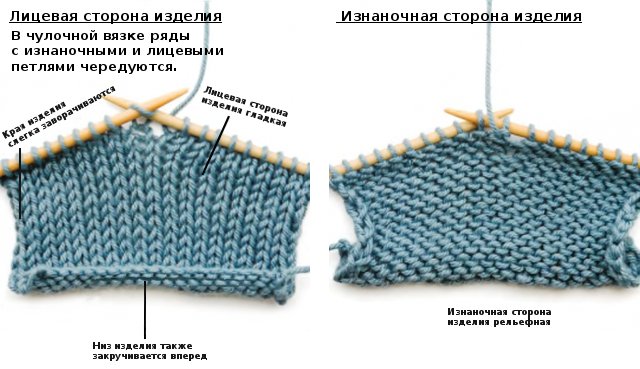 For those who are doing this for the first time, it is better to start with the simplest one - a stocking pattern, in which the front side of the fabric is knitted from front loops, and the back side is knitted from back loops. When knitting tightly, the fabric is even. It can be decorated with an applique or a decorative element can be sewn on.
For those who are doing this for the first time, it is better to start with the simplest one - a stocking pattern, in which the front side of the fabric is knitted from front loops, and the back side is knitted from back loops. When knitting tightly, the fabric is even. It can be decorated with an applique or a decorative element can be sewn on.
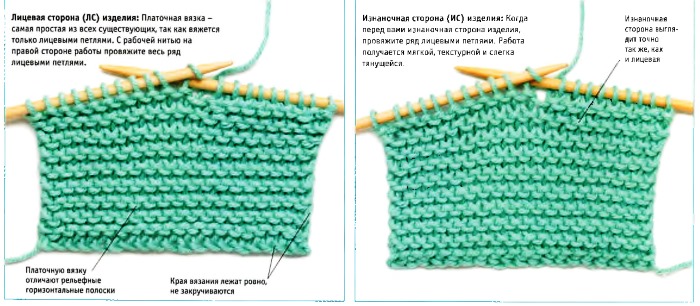
Hats for boys are often knitted with garter stitch, which results in a dense and double-sided product. This pattern is characterized by the fact that all the loops in it are facial.
Basic abbreviations of text in schematic descriptions:
- LP - front loop;
- IP - purl loop;
- КП — edge loop;
- P - loop;
- H — yarn over;
- sch. — diagram;
- crossed - crossed loop.
| Type of pattern | Scheme |
| "Putanka" or rice
|
|
| Two-color rice (in the first and second rows, one color thread is used, in the next pair, the color changes)
|
|
| Regular rubber band
|
|
| Patent type of rubber band
|
|
| English elastic
|
|
| Pearl gum
|
|
| "Honeycombs"
|
|
The instructions always indicate a graphic design (diagram), following which even a complex ornament will turn out beautifully. Norwegian and Scandinavian motifs never go out of fashion.
Geometric patterns do not lose their popularity. Original color combinations look, which suggest various images. Based on the simplest patterns, convex relief ones are knitted, including plaits, diamonds, cones.
Instructions for knitting hats for boys
Hats for boys are easy to make with knitting needles using a schematic drawing, which indicates the step-by-step order of creating the drawing using symbols. The diagram consists of dots, dashes, asterisks and other abbreviated symbols.
Each symbol represents a loop, and each stitch represents a row. The description always provides the corresponding explanation. Work on any model begins with head measurements, knitting a sample and calculating the number of loops.
Boy's hat with a two-color rice pattern
This model can be knitted on straight or circular needles. Having cast on the required number of loops, connect the outer ones into a circle. For convenience, mark the beginning of the first row with a marker.

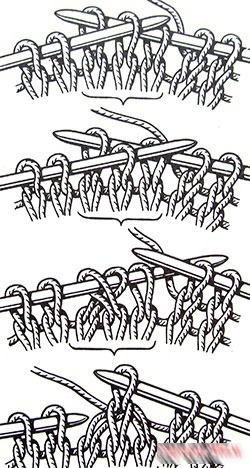
Further work consists of the following steps:
- Using the main thread, knit a 2x2 elastic band 5 cm high.
- Knit 1 row IP.
- Repeat the 2x2 elastic band for another 5 cm, shifting the LP and IP.
- Fold the elastic band in half and knit the loops of the first and last rows of the elastic band together in the next row.
- This is followed by a series of IPs.
- Knit the pattern according to the diagram.
- After 16 cm of knitting, decrease 2 loops from each edge.
- When there are 10 loops left, tighten them with thread.
- Thread the thread through the elastic from the inside.
Fish-shaped hat for a boy
Hats for boys with knitting needles look original if you knit them in the shape of a fish. This model will suit both children and adults. It is interesting that these hats can be made in standard sizes, they fit any head.
The product requires 300 m of yarn in various colors. The simplest pattern for this model is a 1x1 elastic band. The “scales” pattern knitted on the fish’s body looks specific.
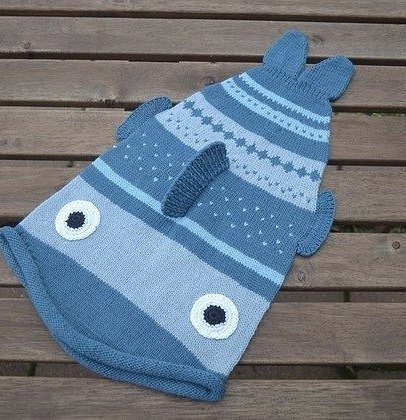 This pattern resembles fish scales, which can be knitted in different ways, differing in the density of the fabric, the size of the scales and the principle of knitting. Each row begins and ends with edge loops.
This pattern resembles fish scales, which can be knitted in different ways, differing in the density of the fabric, the size of the scales and the principle of knitting. Each row begins and ends with edge loops.
The description of knitting small scales is as follows:
- Cast on stitches in multiples of 8, plus 2 sts.
- Knit the first row with IP.
- In the second row: LP, N.
- The third row is knitted with LS.
- In the next row: knit 7 loops from one (LP, H), knit 7 pieces into one IP.
- Continue in a similar manner, but in a checkerboard pattern, starting from the second row.
- In the eighth row, knit 7 loops together using the RP method, and knit 7 loops from the next loop.
Repeat pattern from rows 1 to 8 until the end of knitting.
The fish-shaped hat is knitted in a circle, starting from the "tail" to the "head". The middle of the body is knitted with a "scale" pattern. After that, continue knitting in a circle again.
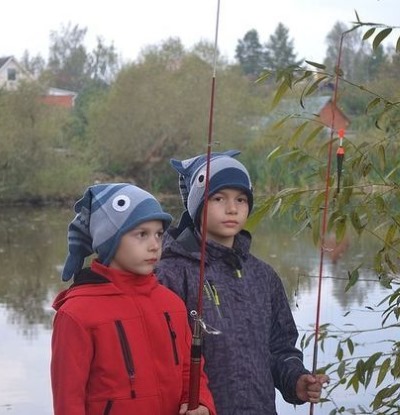
The fish's mouth is knitted with shortened rows consisting only of face loops. The lips are formed in a different color, knitting 8-9 rows in a circle, after which the loops are closed. The fins must be knitted separately with an elastic band, then sewn to the body. The fish's "eyes" can be knitted or sewn on buttons in the form of pupils.
After knitting, all parts are sewn together, the upper fin is sewn vertically, and the side fins are sewn on the sides. Eyes with buttons in the center are sewn to the fish's head.
Traditional shape boy's cap
A hat for boys can be the most ordinary. For example, a model knitted from a long elastic band, with braids, "honeycombs", "braids", with or without a pompom. For work, you will need yarn (150 g) and medium-thick knitting needles (No. 3). First, you need to cast on loops, knit with a 2x2 elastic band about 16 rows.
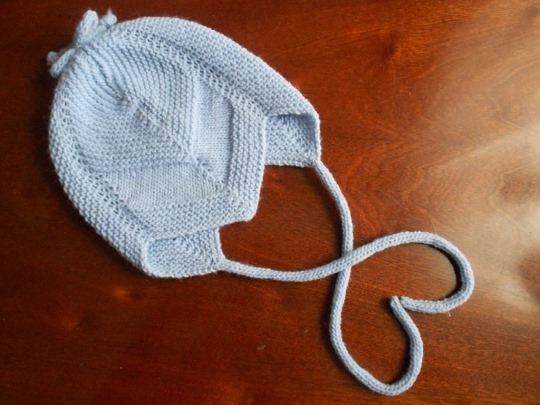
From the elastic band, go to the pattern from the scheme with braids, which can be selected on the Internet. Having knitted 3 rapports up, begin decreasing one loop after 3 rows (on the wrong side). As soon as the length of the hat is 22 cm, the decrease stops. Then tighten all the loops and secure the knot.
Knitted hat-helmet for a boy
Helmet-shaped models protect the child's head, neck and shoulders from frost. That's why many mothers prefer them, and children like them too. This model of a children's helmet is knitted with knitting needles from the top of the product.
For example, for a two-year-old child you will need 100 g of wool with the addition of acrylic, and thick knitting needles (No. 5).
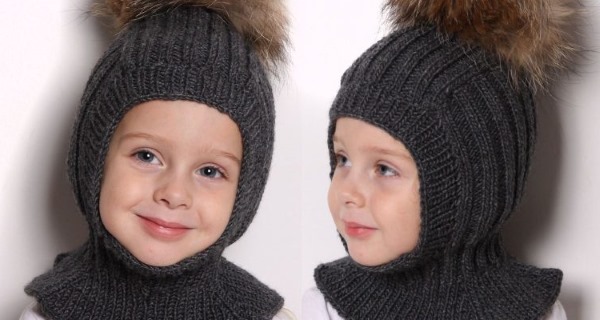
To make the product you need:
- Cast on 4 stitches.
- Knit in a circle 6 rows from LP, in the last two - add 2 loops.
- The helmet is expanded by adding 6 loops in even rows (9 times).
- Knit 14 rows without increases.
- Shape the top part of the rounding of the opening for the face. Transfer 10 loops to an additional thread and knit.
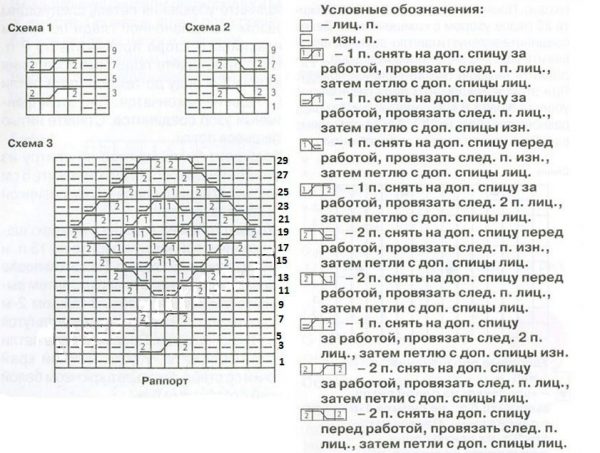
- Decrease by one stitch every other row. Repeat in four rows.
- To form the back of the head, mark the center of the helmet at the back.
- According to the pattern: 15 LP, 2 knit together (1st loop is removed, LP, the removed loop is returned to it), 12 LP, 2 together, 15 LP. In even rows, remove 2 loops (intervals between decreases). Knit eight rows in a straight line.
- Cast on 12 stitches on circular needles for chin.
- Knit 11 rows with an elastic band (1x1).
- Bib: 16 loops go to the front and back, 8 to the shoulders, add 4 more loops for the raglan. Make increases on both sides of the LP (6 times every other row).
- At the end of the work, knit with a rib pattern (1x1) 4 rows high.
- To make a window for the face, you need to cast on 35 loops along the edge of the neckline, leave them on the knitting needle, and add the 10 loops that were set aside. Knit 4 rows with a rib (1x1), close the loops.
The front neckline will be tighter if you stretch a couple of rows of a special elastic band - spandex - from the inside. The ties for the cap can be made from air loops, or in another way.
Knitted Budenovka Hat for Boys
This unusual model is very popular with all the kids. In addition, the ties cover the child's ears, and the headdress itself fits tightly around the head. 200 g of wool is enough for it.
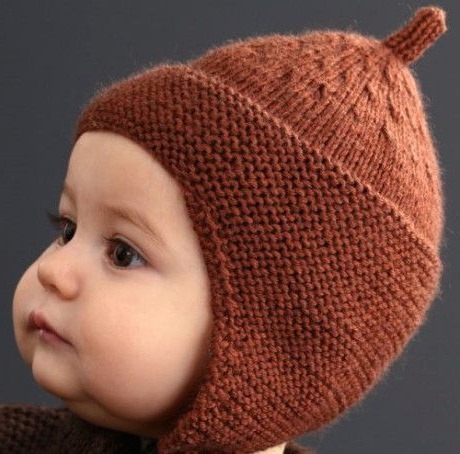
It is better to knit it with a double thread for density. Garter stitch and stockinette stitch are the main ornaments that are suitable for this type of headdress. It is necessary to knit from the ears, moving to the crown.
Step by step instructions:
- Knit the ears, casting on 7 loops. Knit 49 rows with the main pattern (garter stitch). Every other row, make increases in the amount of two loops.
- Cast on stitches for the base, calculated according to the volume of the child's head. Knit 4 cm, attaching the ears to the base.
- Knit the crown in a circular manner with decreases of 4 loops. They must be done every other row. Knit until there are 10 loops left on the needle, which are closed.
Elf hat knitted
The elf hat model is knitted with a 2x2 elastic band. The shape of the product is a rectangle sewn from two halves. You can add a strap to make it stable on the boy's head. To make it, you need yarn (150 g), knitting needles and any button.

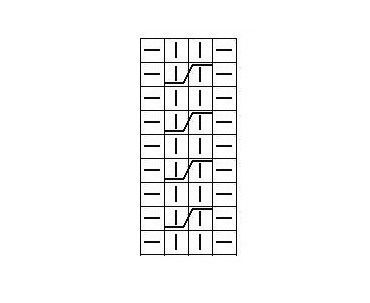

The knitting instructions are given for a 6 year old boy:
- There should be 84 loops on the needles.
- The first two rows are knitted with a 2x2 elastic band (main).
- In the third row: 6 LP, base, 6 KP knit LP;
- Knit the rows skipped in the description according to the pattern.
- In the 6th row - 8 LP, main, 8 LP.
- 9th row - 10 LP, main, 10 LP.
- Continue further, inserting 2 LP in every third row until there are 2 loops left in the main pattern.
- Fold the product in half and sew.
- Knit the strip with a 1x1 elastic band.
- Knit a buttonhole.
- Attach the bar to the hat.
Knitted hat with earflaps for a boy
This hat will protect the boy's ears and forehead from frost and wind. This model is knitted using: ornaments, diamonds, braids. To create a children's ushanka, you will need 100 g of yarn, knitting needles and a fleece lining.
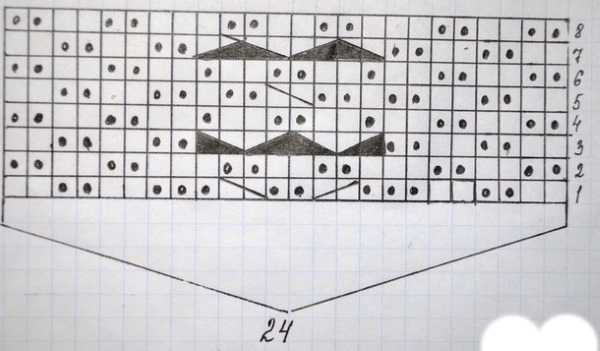
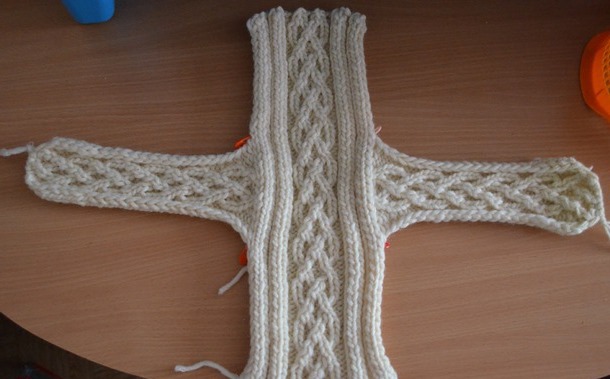
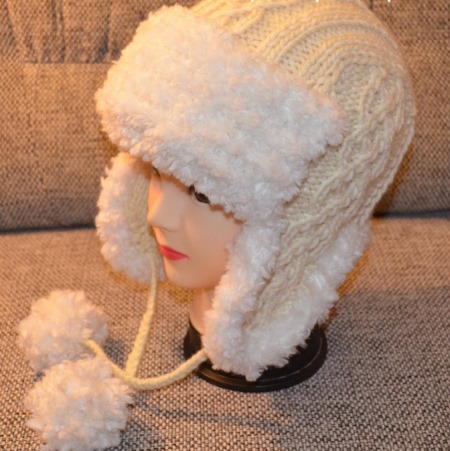
The following instructions will help you knit:
- Knit 7 rows from the cast-on edge with a regular elastic band.
- Add 6 stitches and finish knitting the main part with the front surface.
- After knitting 5 rows, proceed to making the ornament according to the pattern.
- After completing the pattern, move on to decreases (6 loops per row).
- Join the back seam using the main color thread.
- Knit the ears with an elastic band, simultaneously removing a loop from each row.
- The lining should be done without a pattern.
Knitted cap for a boy
Older boys prefer adult models. A cap is a fashionable hat with a visor. In it, the child will feel protected from adverse natural conditions, as well as stylish. There is another significant advantage of such a headdress - economical yarn consumption. Depending on the length of the thread, you will need from 50 g to 100 g.
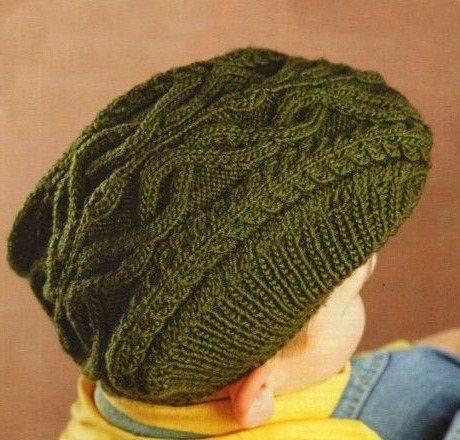

The cap is knitted from the side semicircles, using the description:
- Cast on 4 stitches onto the knitting needles, counting together with the stitch count.
- In odd rows, make H between loops, you should get 7 loops.
- Even - knit IP.
- Repeat the steps until you have 67 stitches on your knitting needles.
- Knit the second semicircle in the same way.
- The length of the central part of the product corresponds to the length of the semicircle, and its width is 9 cm. Knit this part with any pattern.
- Connect all parts.
- Knit the strip from three loops, adding one loop from each edge up to 11 loops. Choose any suitable length of the strip.
- After this, start decreasing to 7 loops.
- Sew the strip to the main part.
The next important stage in making a cap is the visor, which must be knitted separately, first the upper part, then the lower part:
- Cast on 55 stitches along the edge of the strip, starting from the middle.
- Add 4 stitches in even rows, leaving 2 stitches unfinished on both sides.
- Knit 8 rows without additions, leaving 2 stitches unfinished.
- In each even row, do not finish knitting 3, 4, 5 loops, counting from its ends. Introduce unfinished loops into work gradually when knitting the lower part.
- When there are 12 loops left on the needles, remove 4 loops in even rows. There should be 55 loops on the needles again.
To make the lower part, gradually introduce unfinished loops. For a denser base, a template is cut out of cardboard or plastic, which is inserted into it. All that remains is to sew the visor and tie the strip with a finishing seam.
Hat for boys "Viking"
This is an unusual hat, for which you will need several skeins of multi-colored yarn in the amount of 50 g, knitting needles on a fishing line and a hook. Pearl pattern or stockinette stitch are ideal for knitting such a model.
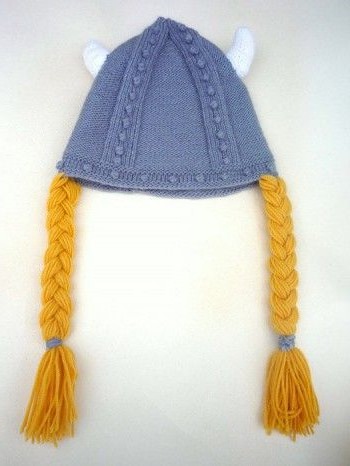
The knitting process consists of the following steps:
- Cast on 5 stitches.
- Knit according to the pearl pattern.
- To increase the earphone, add 1 loop. Knit up to 23 loops, IP, break the thread.
- Knit the second earphone in the same way, but leave the thread.
- To knit the part of the headdress - the back of the head, cast on 6 loops. Continue with the same pattern on the ear loops.
- Cast on 22 stitches for the front part and knit. Additionally, cast on 6 stitches for the back part of the product.
- To separate the colors, knit rows: front, back and front again.
- With a different color, knit a row of LP, 2 rows of the main pattern and 5 rows of LP.
- After 3.5 cm from the beginning, decrease.
- Cast on stitches along the edges of the earphones and knit 3 rows of LP in both directions. Break the thread and secure the ends.
- Make the horns: cast on 20 stitches on the knitting needles, knit 3 rows with the front surface. In the next front row, decrease the stitches. Stuff the horns with any padding and attach to the hat.
- Make 2 ties from the chain stitch loops.
Beanie hat
The beanie hat is worn by five-year-old boys and men of any age. This headdress has a rather modest appearance, but is not inferior to others in terms of convenience and beauty.
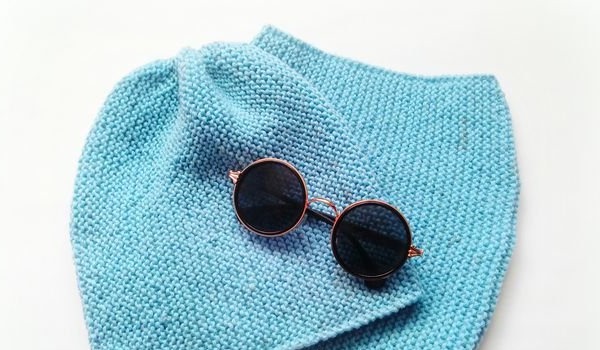
This model fits tightly on the head thanks to the sewn-in elastic band, and does not need additional ties. The number of loops is dialed, depending on the height of the product. It is necessary to observe one condition - 10 loops are not knitted, they are needed for the top. Garter stitch is the best option for the pattern, it takes about 100 g of yarn.
Children's hat with ties knitted
Hats with ears keep you warm and look beautiful. These can be bear or kitten ears, if desired. And there are ears in the form of fluffy pompoms. There are many ways to knit such models, but the simplest is to make two hats of different sizes - an inner one and an outer one, which is 3 loops larger than the first.
The work on manufacturing the product consists of the following points:
- Cast on 7 stitches.
- Knit with the main pattern, adding 2 loops in the front rows. Break the thread at the end.
- Knit the second element in the same way, but do not break the thread.
- Connect the ears with air loops. The result is the back of the head and the sides of the hat.

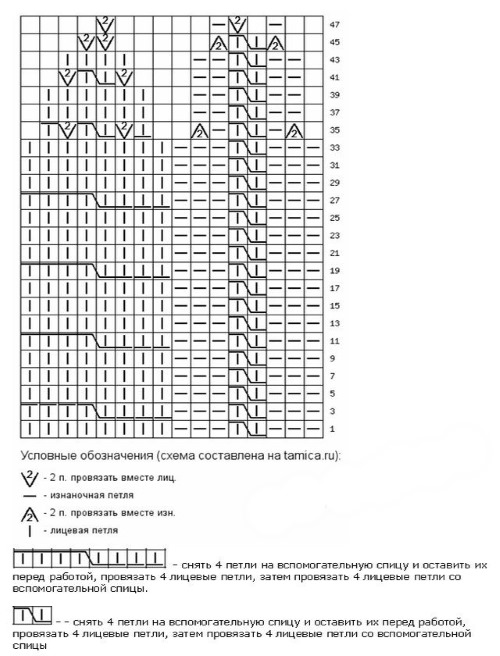
- Knit 10 rows with the main pattern.
- In the front rows, add 1 loop for rounding, on both sides.
- Find loops for the forehead.
- On circular needles, knit upward 10 cm, dividing the loops into 7 wedges.
- Remove one loop in each row.
- 7 CP pull together with thread.
The outer hat is knitted similarly, only the number of loops in each part is added. Both finished hats are sewn together, folding the inner part down with the front side. The processing is done with a crochet hook, as a result of which a neat and beautiful seam is obtained.
Balaclava hat
This model is in demand today. Headwear with an oval-shaped cutout for the face is worn by children, athletes and the military. The knitting description of this model has the same principle as a helmet hat. It protects from the cold and keeps warm.
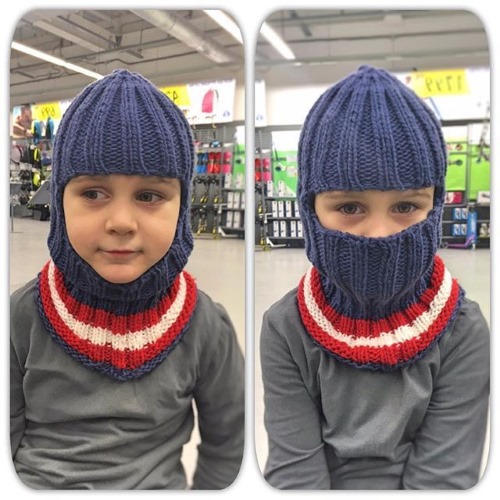
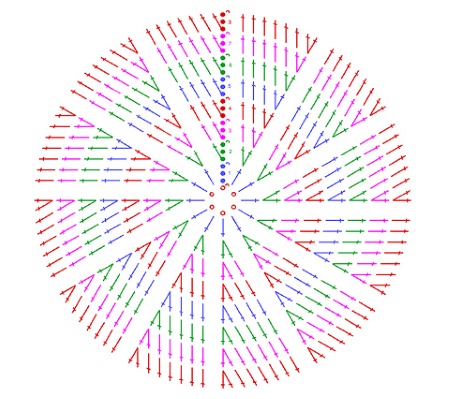
It can be difficult to please a teenager. Many children like to dress up, so they start choosing things on their own. A knitted item can satisfy all the wishes of its owner. Hats for boys, knitted with knitting needles, in addition to convenience and beauty, carry a charge of energy and love that grandmothers and mothers pass on.
Article formatting:Natalie Podolskaya
Video about knitting hats with knitting needles
Knitted hats for boys - a simple version of headwear:

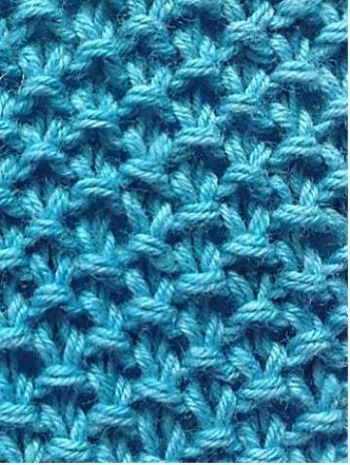
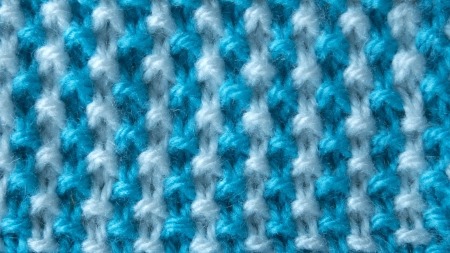
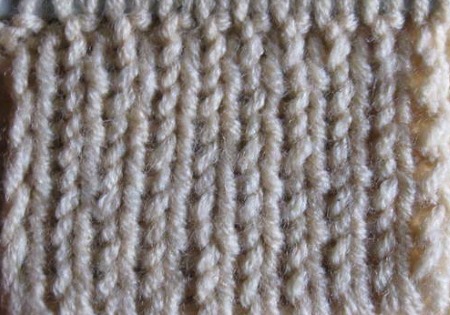

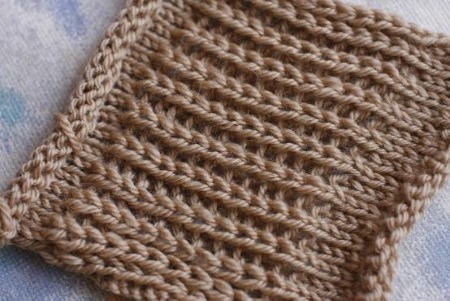
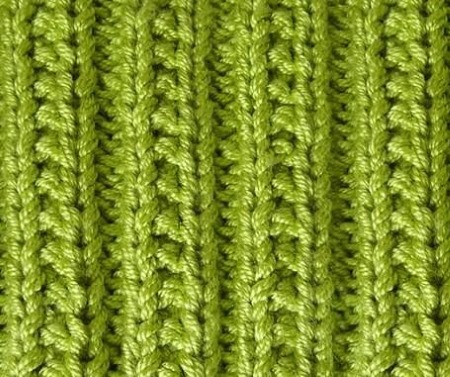
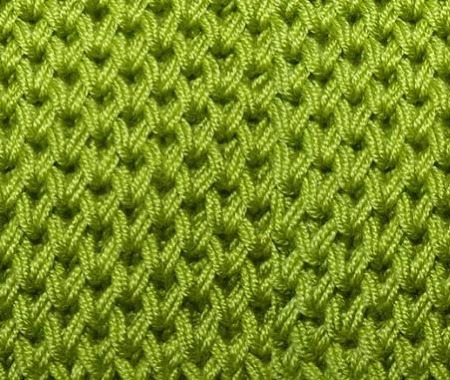
Read the instructions for the helmet hat and try knitting according to it. Does it work?
"Cast on 4 stitches.
Knit in a circle 6 rows from LP, in the last two - add 2 loops.
The helmet is expanded by adding 6 loops in even rows (9 times).
Knit 14 rows without increases.
Design the upper part of the rounding of the opening for the face. 10 loops transfer to an additional thread and knit. "What is this?. or the head should be like a mutant's - long and thin! and the picture does not match the description. How can you add 6 loops to a 2 * 2 elastic band and not knock down the pattern?
Same question. It feels like it's from a completely different hat, like Cipollino, with a sharp tail at the back...
corresponds to the photo.